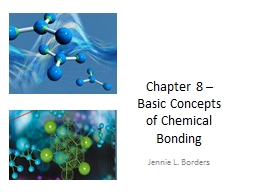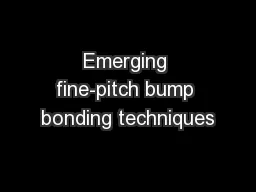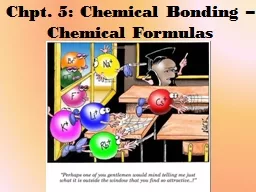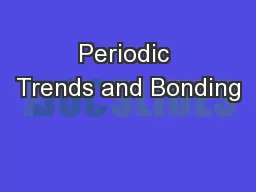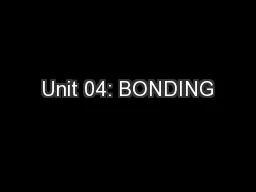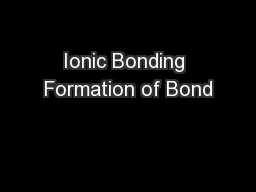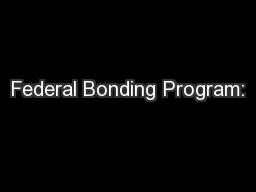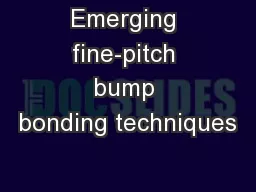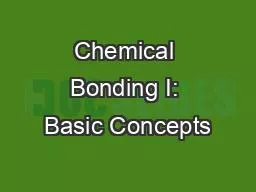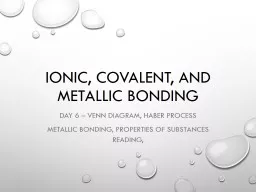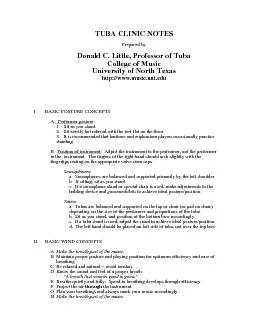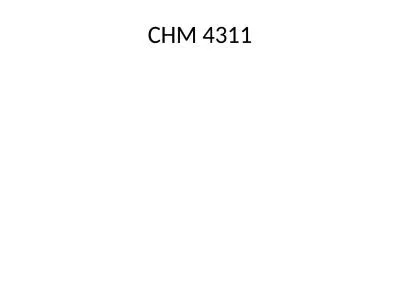PPT-Chapter 8 – Basic Concepts of Chemical Bonding
Author : beatrice | Published Date : 2023-10-04
Jennie L Borders Section 81 Chemical Bonds Lewis Symbols and the Octet Rule Whenever two atoms or ions are strongly attached to each other we say there is a chemical
Presentation Embed Code
Download Presentation
Download Presentation The PPT/PDF document "Chapter 8 – Basic Concepts of Chemical..." is the property of its rightful owner. Permission is granted to download and print the materials on this website for personal, non-commercial use only, and to display it on your personal computer provided you do not modify the materials and that you retain all copyright notices contained in the materials. By downloading content from our website, you accept the terms of this agreement.
Chapter 8 – Basic Concepts of Chemical Bonding: Transcript
Download Rules Of Document
"Chapter 8 – Basic Concepts of Chemical Bonding"The content belongs to its owner. You may download and print it for personal use, without modification, and keep all copyright notices. By downloading, you agree to these terms.
Related Documents

